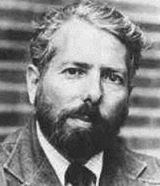Stanley Milgrams lydnadsexperiment (Wikipedia beskriver utförligt studien) på Yale University, är ett av psykologins mest berömda. 65 % av försökspersonerna i studien lydde order, och gav andra försökspersoner elstötar med 450 volt trots att de visste att det var förenat med livsfara. Inte oväntat röstar 31,4 % av läsarna på PsyBlog fram Milgrams experiment som psykologihistoriens mest betydelsefulla i en pågående onlineomröstning.
Det etiska komplikationerna lyfts ofta fram när man diskuterar Milgrams experiment och det är en allmän sanning att så här får man inte bedriva vetenskapliga studier idag. Mind Hacks rapporterar om professor Jerry Burger på Santa Clara University, och hans team som bestämde sig för att replikera Milgrams studie idag. På bloggen Situationist finns hela bakgrunden till projektet. En av utgångspunkterna var att försöka mildra de problematiska aspekterna med Milgrams experiment samtidigt som man var mån om att hålla sig så nära ursprungsstudien som möjligt. Så här förklara Burger själv hur de gick tillväga:
”I went to great lengths to recreate Milgram’s procedures (Experiment Five), including such details as the words used in the memory test and the experimenter’s lab coat. But I also made several substantial changes.
First, we stopped the procedures at the 150-volt mark. This is the first time participants heard the learner’s protests through the wall and his demands to be released. When we look at Milgram’s data, we find that this point in the procedure is something of a “point of no return.” Of the participants who continued past 150 volts, 79 percent went all the way to the highest level of the shock generator (450 volts). Knowing how people respond up to this point allowed us to make a reasonable estimate of what they would do if allowed to continue to the end. Stopping the study at this juncture also avoided exposing participants to the intense stress Milgram’s participants often experienced in the subsequent parts of the procedure.
Second, we used a two-step screening process for potential participants to exclude any individuals who might have a negative reaction to the experience. . . . More than 38 percent of the interviewed participants were excluded at this point.
Third, participants were told at least three times (twice in writing) that they could withdraw from the study at any time and still receive their $50 for participation.
Fourth, like Milgram, we administered a sample shock to our participants (with their consent). However, we administered a very mild 15-volt shock rather than the 45-volt shock Milgram gave his participants.
Fifth, we allowed virtually no time to elapse between ending the session and informing participants that the learner had received no shocks. Within a few seconds after ending the study, the learner entered the room to reassure the participant he was fine. Sixth, the experimenter who ran the study also was a clinical psychologist who was instructed to end the session immediately if he saw any signs of excessive stress.
Although each of these safeguards came with a methodological price (e.g., the potential effect of screening out certain individuals, the effect of emphasizing that participants could leave at any time), I wanted to take every reasonable measure to ensure that our participants were treated in a humane and ethical manner.
Trots detta var resultatet ungefär detsamma som i Milgram studie. På Situationist kan man se videoklipp och läsa i detalj om undersökningen.
